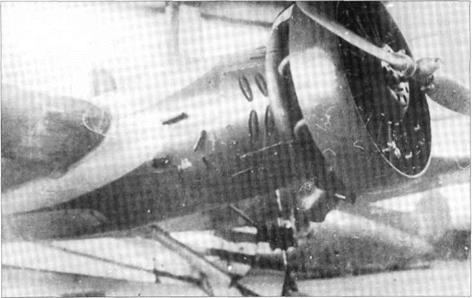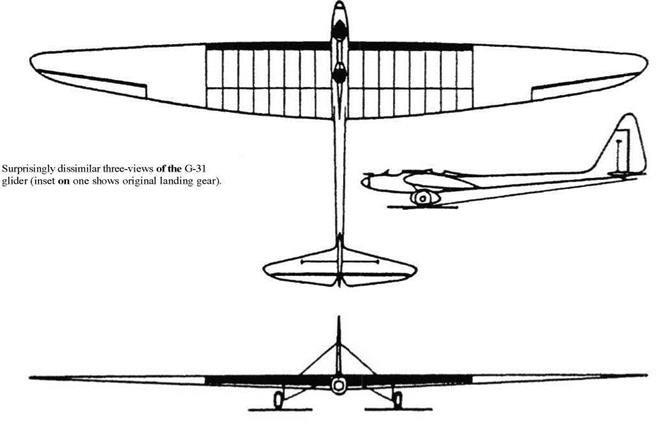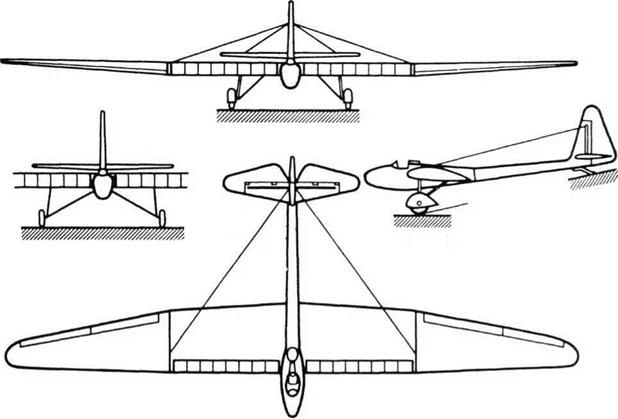Grokhovskii G -31, Y akob Alksnis, Strekoza
Purpose: To build a troop-carrying glider; this was later modified into powered aircraft.
Design Bureau: WS-RKKA (Red Army special design team for aviation forces), director Pavel Ignatyevich Grokhovskii (1899-1946).
Grokhovskii had a brief but intense career, forming a branch of WS-RKKA in Leningrad in 1934 and seeing it liquidated in 1936. Most of his designs were concerned with assault by airborne forces, and all showed a remarkable originality. The G-61 was a ‘people pod’ able to house seven armed troops and actually flown attached under each wing of an R-5, a mass-produced 700hp biplane. The G-31 (in some documents called G-63i>/s), named for WS Gen Yakob Alksnis, was a giant cargo glider, designed by Grokhovskii and B D Urlapov to carry troops lying inside the wing. From this Grokhovskii produced the G-31 powered aircraft. First flown in late 1935, it flew to Moscow in 1936 for RKKA testing. It was eventually decided that the
arrangement of troops packed inside the wing, with no chance of escape in flight, was unacceptable. In any case, the concept of a powered glider for assault operations was eventually considered unsound.
Sharing a strengthened version of almost the same airframe as the glider, the G-31 (again named for Alksnis and also dubbed Strekoza, dragonfly) was a graceful aircraft as befits a powered version of a glider. Though intended for military purposes it was one of several types designed in the 1930s with no consideration of speed, because this was not thought significant. The airframe was wooden, with a vestigial fuselage of multiply veneer formed by presses with double curvature. On the front was a puny 100hp M-l 1 five – cylinder radial. Subsequently Grokhovskii built a G-31 with a strengthened structure matched to the 700hp M-25, an imported (later licensed) Wright R-1820 Cyclone. This was fitted in a Townend-ring cowl and it drove a Hamilton light-alloy ground-adjustable propeller. It is believed that later a three-blade flight-variable Hamilton Standard
was fitted. As in the glider there were cockpits for a pilot and flight engineer, while between the wing ribs were compartments for 18 troops, nine in each wing (drawings show eight in each wing). They boarded and were extracted through hinged leading edges, which were transparent, as in the G-61 pods.
Few details of the G-31 have survived. Clearly the naming of this aircraft and its predecessor after Alksnis was a mistake, because he was arrested in 1936 and executed in 1938. The close-knit Grokhovskii team was ‘liquidated’ very soon after the General’s arrest.

|
||||||||||||||||
|
||||||||||||||||
|
|
|
|
|













